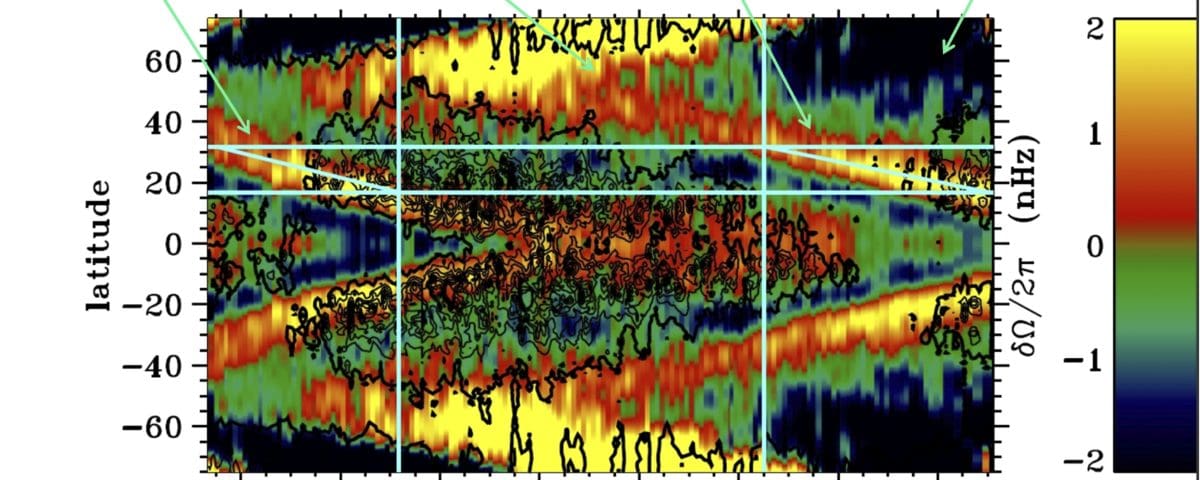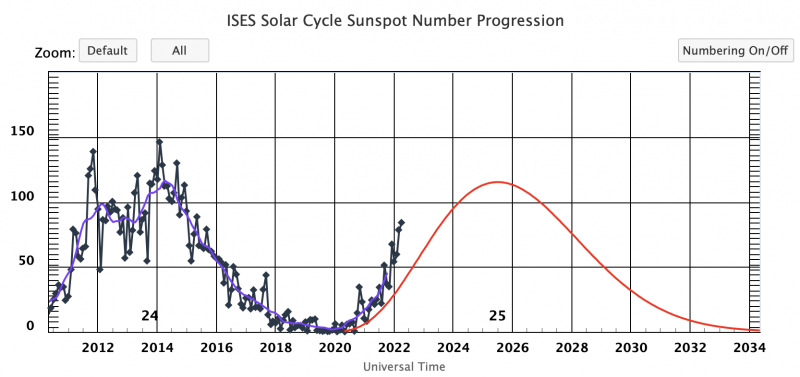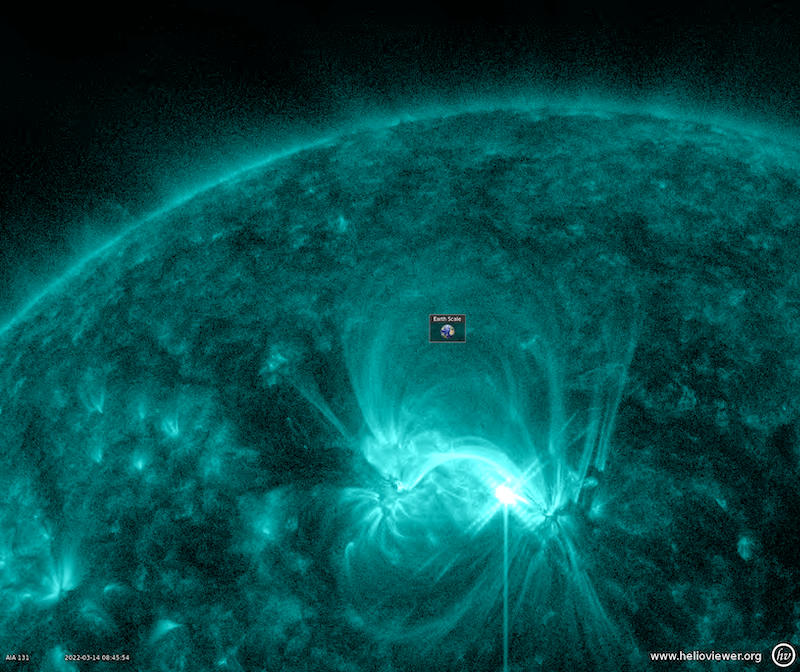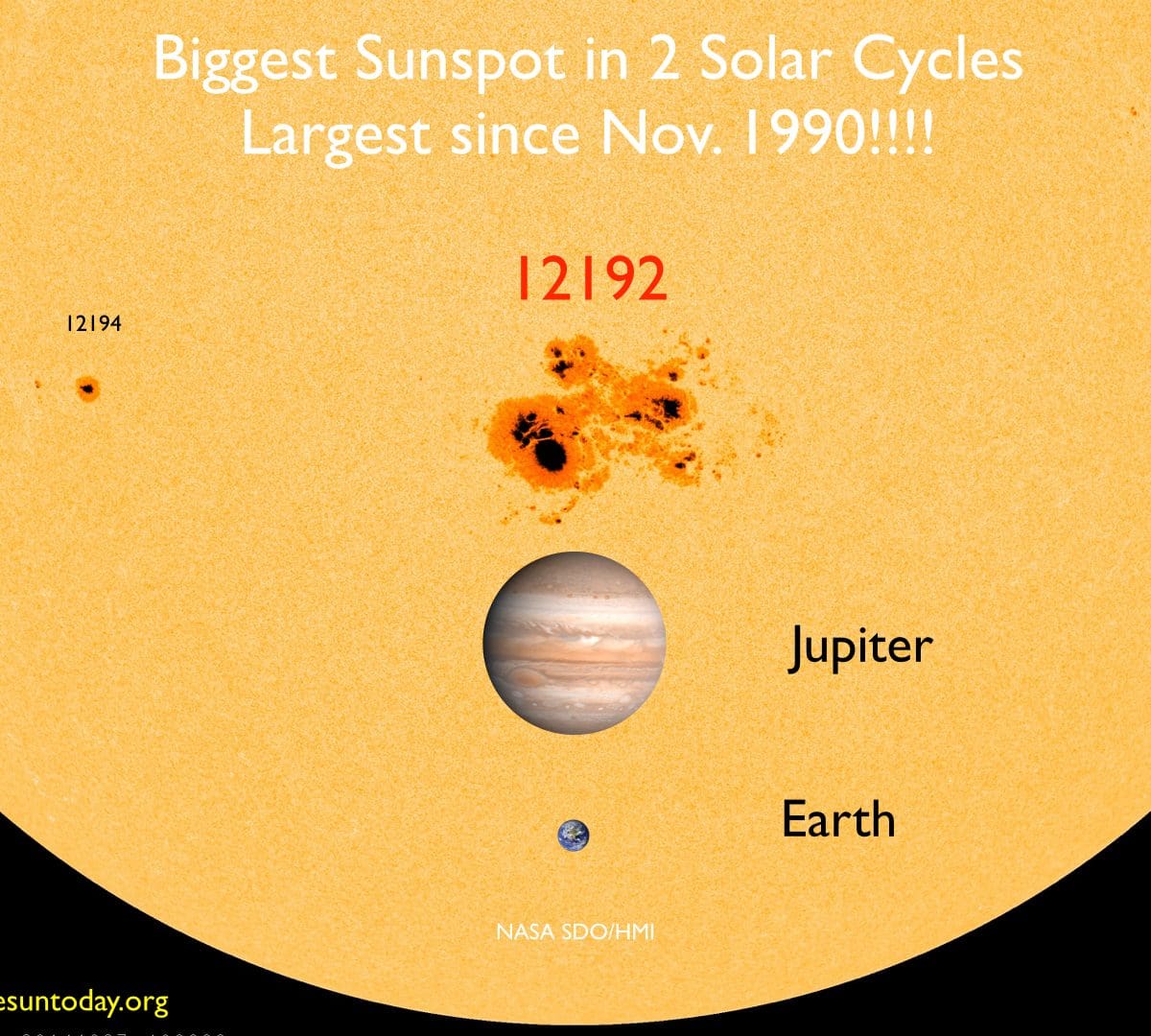

A view of the Sun's photosphere, the visible surface, during solar minimum with no visible sunspots and solar maximum with a lot of sunspots.
A few weeks ago 3 groups of solar scientists released a joint press release at the 2011 meeting of Solar Physics Division (SPD) of the American Astronomical Society. Each group presented a unique set of solar observations, which together they interpreted as showing the Sun is headed towards a period of extended low activity not solar maximum. There has been very little noticeable solar activity since the exiting event of June 7, 2011. Could this mean that those 3 groups of solar scientists are correct? Maybe not… (For more on solar activity and the solar cycle.)
Three different papers were presented at the SPD press conference.
Paper 1

The east-west zonal plasma flow inside the Sun, called the torsional oscillation, which starts at mid-latitudes and migrates towards the equator.
The first paper by Frank Hill and colleagues presented observations of an east-west flow of plasma under the surface of the Sun called the torsional oscillation. This flows starts at mid latitudes and migrates to the equator over time. The location of the flow matches the location new sunspot formation in each cycle and it predicted the late onset of the current cycle 24. In this data observers haven’t seen any sign of the flow for cycle 25, indicating the cycle may be delayed (2021 or 2022) or may not happen at all.
Paper 2
The second paper by Penn and Livingston shows a long-term weakening in the magnetic field strength of sunspots. They predict that by cycle 25, magnetic fields emerging on the Sun will be so weak that little or no sunspots will form.
Paper 3

Iron heated to 2 million degrees Celsius shows magnetic activity observed in the Sun’s faint corona. New solar activity emerges first at about 70 degrees latitude at the start of a cycle, then towards the equator as the cycle ages. At the same time, the new magnetic fields push remnants of the older cycle as far as 85 degrees poleward.
The 3rd paper by Altrock looks at the movement of magnetic features towards the solar poles. Iron heated to 2 million degrees Celsius shows magnetic activity observed in the Sun’s faint corona. New solar activity emerges first at about 70 degrees latitude at the start of a cycle, then towards the equator as the cycle progresses. New magnetic fields push remnants of the older cycle as far as 85 degrees poleward. This meridional flow is called “the rush to the poles.”
Altrock notes that cycle 24 started out late and slow and may not be strong enough to create a rush to the poles. He believes this is indicating a very weak solar maximum in 2013 or maybe no maximum at all.
So, these 3 papers following the authors interpretations indicate to them that the solar cycle is basically shutting down and so the Sun is going into a phase of hibernation with little or no activity.
Well, I have my own take on this scenario and many other solar physicists agree with me. My take is NOT GONNA HAPPEN!
There are some great discussion in the one of the New York Times science blogs with detailed comments and discussions by some of those scientist. You can find them at:
Would Solar Lull Snuff Climate Action? by Andrew Revkin
A Solar Scientist Rebuts a Cool Sunspot Prediction by Andrew Revkin
Here are a few quick points I have on the subject some of which are echoed in more detail by one of the scientists featured in the New York Times posts, Dr. Douglas Biesecker.
- Okay so maybe NOT GONNA HAPPEN is a bit strong but my first point is basically that there really is not enough information in the papers presented. It may happen, it may not (it probably won’t) but really we just don’t know. This is really apparent in the first 2 papers.
- Paper 1 only covers a bit more than one cycle of torsional oscillation observations. It is really difficult to establish a pattern or rules about a physical process with only 1 or 2 observations. This is especially true if you don’t understand the physics. (The physics involved here is very complex and not well understood.) Another good point made by many scientists is that the current cycle is the weakest cycle in modern times (space age) so we already know it is odd. Why then do we think it is going to be like all the other cycles? Plus many have already predicted a later start to cycle 24, i.e. so this is not a surprise. We just have to wait and see because the current cycle minimum depends on the next cycle’s start.
- Paper 2 also has a very limited data set. The observations are mostly from the declining phase of the solar cycle and the data points have very large uncertainties. We don’t have enough data to tell if this decrease is just something that varies with solar cycle, which would mean that the field strength will begin to increase over the next few years. Also, statistics tells us that this kind of analysis is not predictive! You cannot extend that line past the end of the data points! That line is only intended to help you fill in data points in between the points you already have.
- I am not going to go into paper 3. So if you want to learn more check out the NY Times posts and read the detailed comments by Dr. Biesecker. The basic point brought out by Dr. Biesecker is that there really isn’t a problem with these observations.
I don’t won’t you to think that the science in these papers is wrong or suspect. These are solid scientists who have provided a great deal to the field. But what I do have a problem with is the conclusion made by combining the results from these 3 papers. The real answer at this point is: ONLY TIME WILL TELL.





